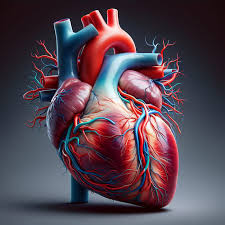Kidney dysplasia is a congenital condition in which one or both kidneys develop abnormally while a baby is in the womb. This condition can affect kidney function and may lead to complications later in life. While it can be concerning for parents and patients, understanding kidney dysplasia, its causes, symptoms, and potential treatments can help manage the condition effectively.
What is Kidney Dysplasia?
Kidney dysplasia occurs when cysts replace normal kidney tissue, preventing the kidney from functioning properly. The condition may affect one kidney (unilateral kidney dysplasia) or both kidneys (bilateral kidney dysplasia). In cases where only one kidney is affected, the healthy kidney typically compensates, allowing the body to function normally.
Causes of Kidney Dysplasia
The exact cause Renal Dysplasia is not always clear, but several factors may contribute to its development, including:
- Genetic Mutations: Certain inherited conditions can lead to kidney abnormalities.
- Prenatal Medication Exposure: Some medications taken during pregnancy, such as ACE inhibitors or angiotensin receptor blockers, may increase the risk of kidney dysplasia.
- Urinary Tract Blockages: Blockages in the urinary tract during fetal development can interfere with kidney formation.
Symptoms of Kidney Dysplasia
Many individuals with unilateral kidney dysplasia do not experience symptoms because the other kidney functions normally. However, in more severe cases, symptoms may include:
- High blood pressure
- Urinary tract infections (UTIs)
- Swelling in the abdomen due to fluid buildup
- Pain in the affected area
Diagnosis and Treatment
Diagnosis
Renal Dysplasia is often detected through prenatal ultrasounds before a baby is born. In some cases, additional imaging tests, such as an MRI or CT scan, may be used to assess kidney function after birth.
Treatment Options
There is no specific cure for Renal Dysplasia but treatment focuses on managing symptoms and preventing complications:
- Monitoring: Regular check-ups and imaging tests help track kidney function.
- Medications: Blood pressure medications or antibiotics may be prescribed to manage symptoms or prevent infections.
- Surgery: In rare cases, if a dysplastic kidney causes severe pain or complications, surgical removal may be necessary.
- Lifestyle Adjustments: Maintaining a healthy diet, staying hydrated, and managing blood pressure can help support kidney health.
Living with Kidney Dysplasia
Most individuals with unilateral Renal Dysplasia can lead normal lives with proper medical care and lifestyle management. However, those with bilateral kidney dysplasia may require more intensive medical intervention, including dialysis or a kidney transplant if kidney failure occurs.
Final Thoughts
Kidney dysplasia is a condition that varies in severity, but with the right medical guidance and care, individuals can manage their health effectively. Early detection, regular monitoring, and lifestyle adjustments are key to ensuring a good quality of life for those affected. If you or a loved one has been diagnosed with Renal Dysplasia consulting a healthcare professional for personalized advice is essential.








 Super Top up in health insurance
Super Top up in health insurance
 on what is a super top-up plan and its benefits and limitations?
on what is a super top-up plan and its benefits and limitations?


